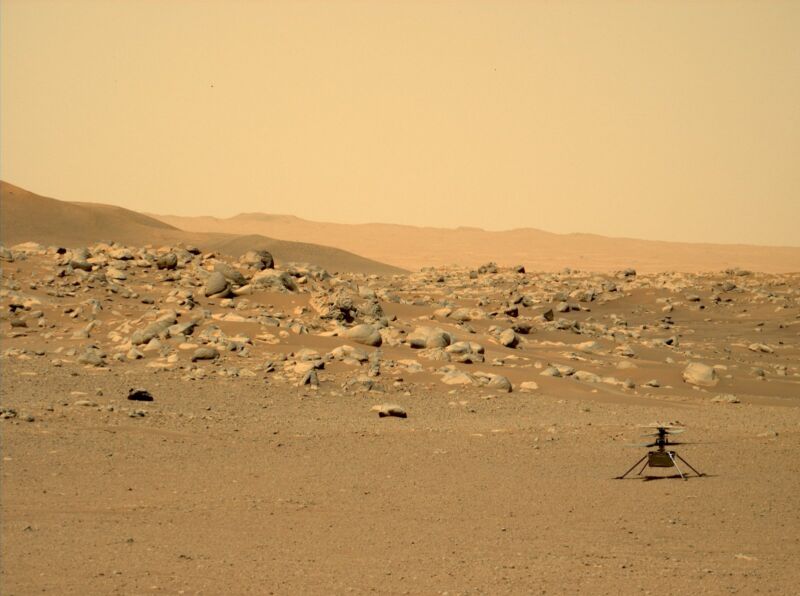
The achievement of powered flight on another world is one of the great spaceflight feats of the last decade. Since its first brief hop on April 19, 2021, the Mars Ingenuity helicopter has subsequently made an additional 27 flights, traveling nearly 7 km across the surface of the red planet and scouting ahead of NASA's Perseverance rover. It has wildly exceeded the expectations and hopes of its scientists and engineers.
But recently, the small, automated helicopter has had problems with dust accumulating on its solar panels, NASA says. This dust reduces the ability of the vehicle to recharge its six lithium-ion batteries. And just as the helicopter needs all of the solar energy it can get, the northern hemisphere of Mars is approaching the dead of winter, which comes in a little more than two months.
Due to these battery issues, the helicopter's team of flight controllers at NASA's Jet Propulsion Laboratory lost contact with the helicopter on May 3. They had been closely monitoring the health of their tiny spacecraft, particularly the charge state of its batteries. After losing contact, the engineers figured that the Ingenuity's field-programmable gate array—essentially, its flight computer—entered into shutdown mode due to a lack of power. In such a situation, virtually all of the helicopter's on-board electronics turned off to protect them from the cold nighttime temperatures, more than 100° Fahrenheit below freezing. This included the internal clock.
With this working hypothesis, the engineers on Earth took an extraordinary step to save their plucky helicopter. Ingenuity landed on Mars in February 2021 as a small component on the much larger Perseverance rover, which it uses as a bridge to communicate back to Earth. After it shut down earlier this month, the engineers figured that when the Sun rose and Ingenuity's batteries started to charge, it would try to communicate with the nearby rover. Only, because its internal clock had reset, when Ingenuity tried to call Perseverance, the rover wouldn't be listening.
So, the engineering team commanded Perseverance to halt all of its ongoing science activities for a full day to essentially sit there and listen intently for Ingenuity's call. The significance of this decision is that the helicopter was initially viewed as an add-on technology demonstration. Some of the rover's leadership team did not even want the added risk of bringing Ingenuity along. The helicopter was supposed to make five experimental flights in 30 days and then be set aside. Now, the entire Mars mission was being put on hold, nearly 13 months after Ingenuity's first flight, in the hopes of saving the small vehicle.
Well, happily, Ingenuity did call home after about 24 hours. According to NASA, the link was stable, and the solar array managed to charge its batteries to 41 percent. The engineers say they hope to resume Ingenuity's flight campaign within the next several days after bringing the helicopter's batteries to a full charge.
Unfortunately, this may be the beginning of the end for a helicopter that has vastly exceeded all expectations. The NASA engineers have had to take some fairly drastic steps to preserve Ingenuity's battery charge. For example, they have now commanded the helicopter's heaters to come on only when the battery's temperature falls to -40°, far colder than the previous point of 5° Fahrenheit. It is not known how many of the off-the-shelf components on the vehicle will fare without this additional heating during the cold Martian nights.
And Mars will only get colder and darker for the next 10 weeks as winter deepens.
reader comments
359